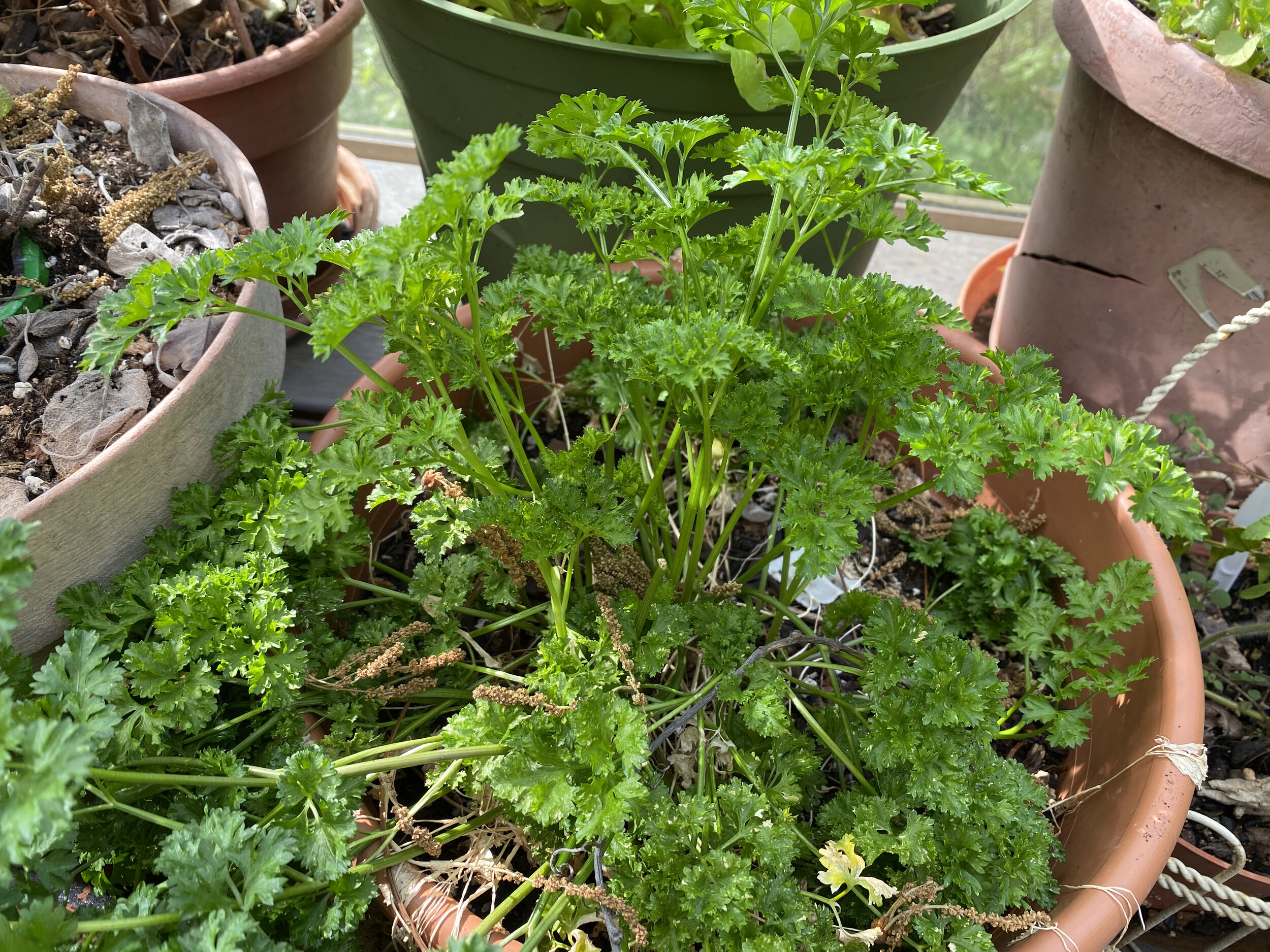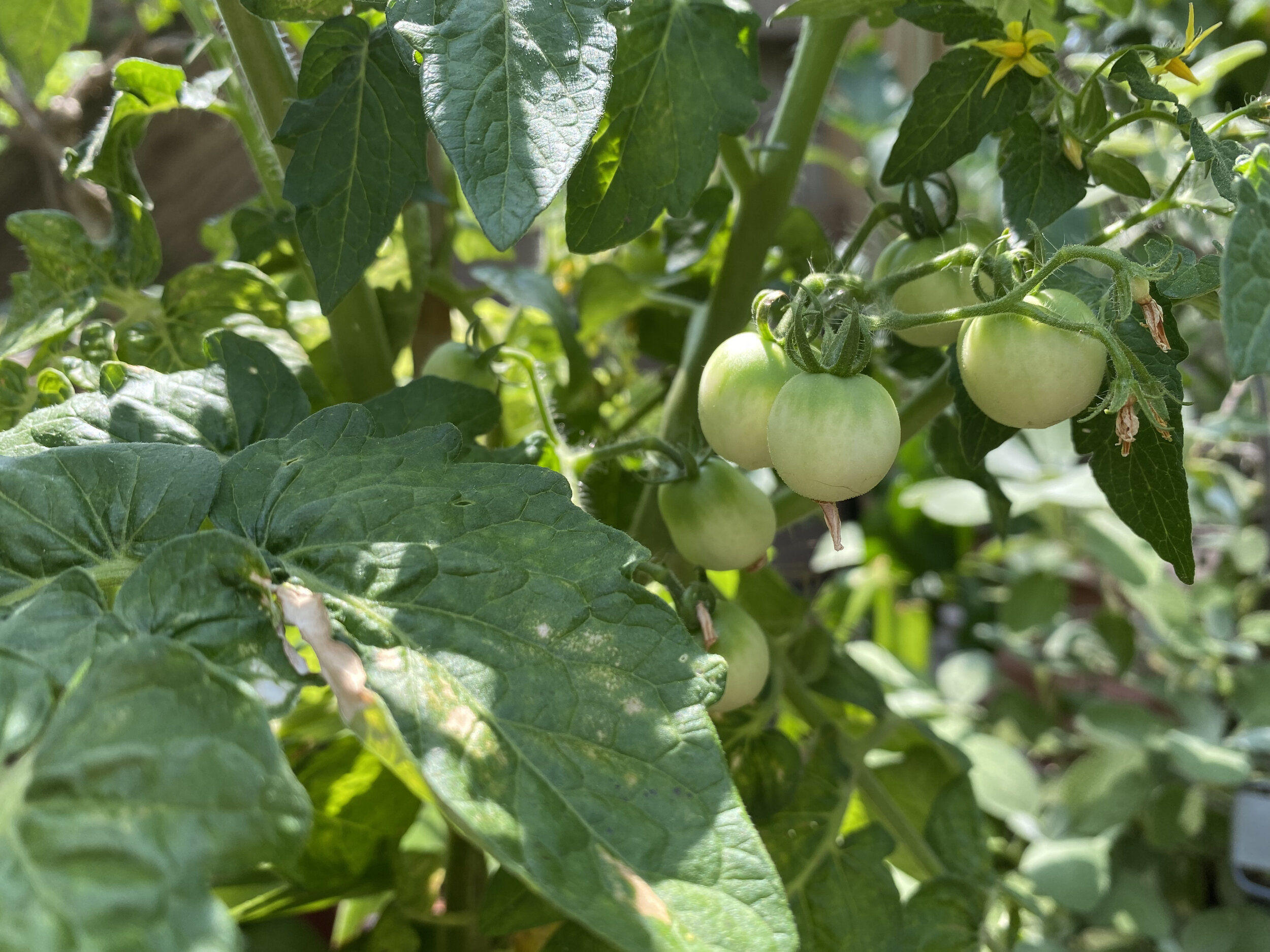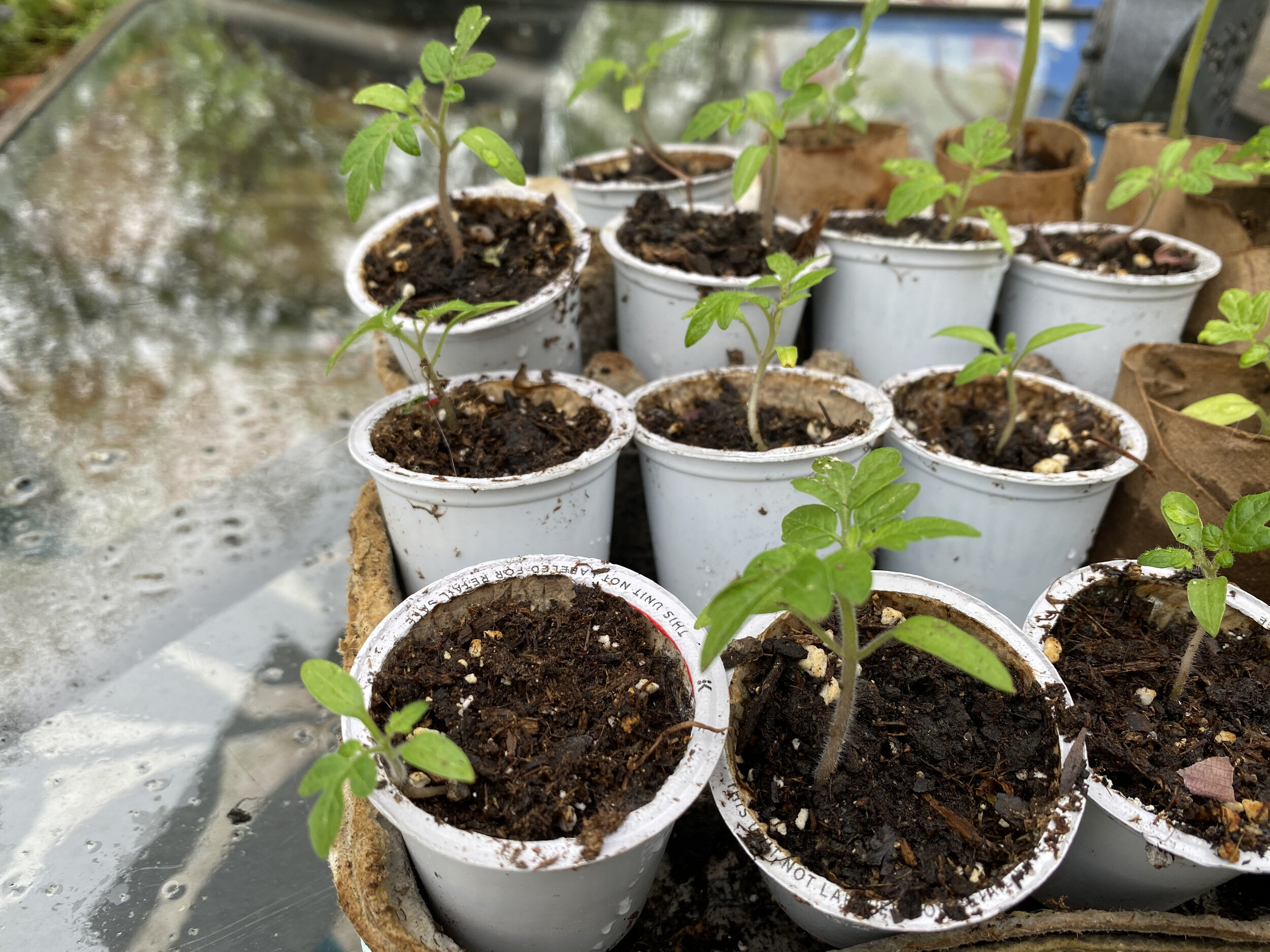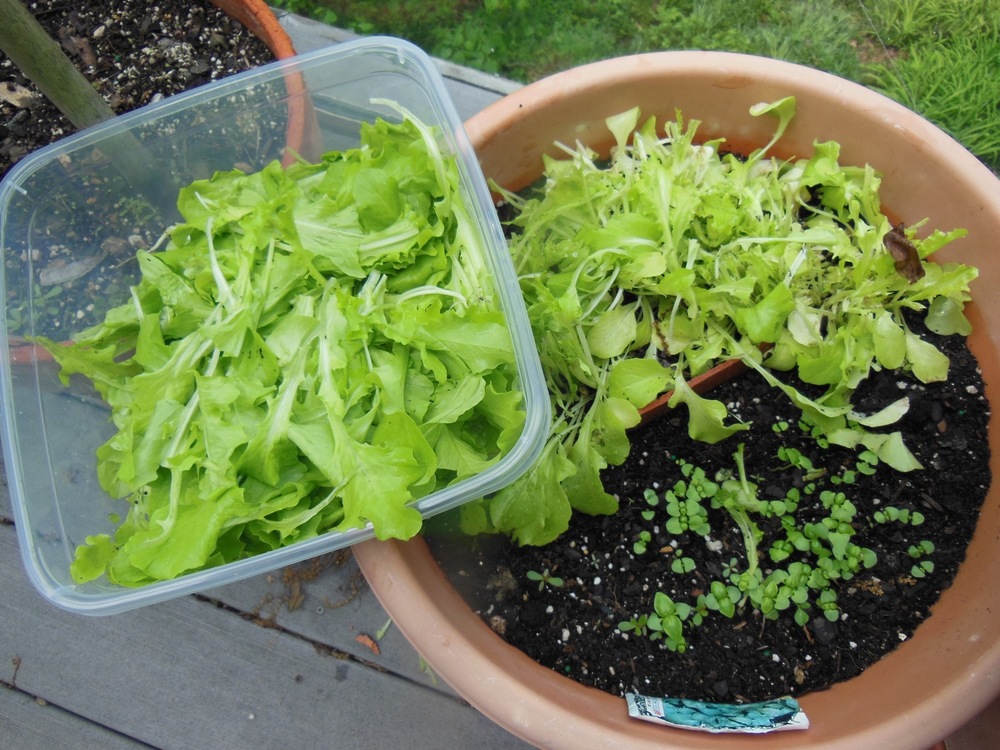Pot Garden One Month Later
/My pot garden one month later has produced lettuce, several herbs including catnip and is now growing tomatoes and peppers. (charlotte ekker wiggins photo)
Pot Garden One Month Later
This is one month since I started planting in pots again on my deck. So many how to guides don't discuss what happens after one gets started with a container garden so I will feature the results through the growing season. As I said earlier, besides the sheer fun of saying you have a “pot garden,” growing food in pots is an easy and practical way to get yourself fresh produce.
Here's a quick 101 primer on how to set up a pot garden. This is a quick video tour of how I started. Here's a short video tour of what the pot garden looks like a month later.
What to Grow in Pot Garden
I've been growing in pots for several decades now. It started when I was traveling for work but still wanted fresh herbs for cooking and cat treats; then expanded to wanting better flavored tomatoes.
If you haven't started yet, here is a list of some easy spring seeds to get you started:
Lettuce and mixed greens; beets, peas, spinach, onions (red, white and yellow) and radishes. All of these crops like cool spring weather.
A note about radishes. Don’t toss those green tops, add the top green to a salad, they are delicious.
Now that the danger of hard frost is over, I've added cherry tomato starts surrounded by basil seedlings. Basil will keep bugs off the tomatoes and improve flavor. Clam shells work well as tiny greenhouses to protect tomato seedlings from late cold spells.
I also started nasturtium, green peppers, tiny zinnias, more basil and dill from seed. You can buy starts but it's less expensive to grow from seeds. And catnip. I can't seem to grow enough catnip!
How to Manage Pot Gardens
Don’t dig up soil from your garden; start with new potting soil. You don’t want to grow unwanted bugs.
When planting summer crops, add compost to the bottom of the pots before adding potting soil to feed soil that keeps plants fed and healthy.
Wet soil down before adding seeds or plants.
Pick up a set of children’s gardening tools. They are a better size to work in pots.
Add buried plastic bottles with holes on sides to make sure water gets to the roots.
If you have a crop you can’t get to, don’t toss it just yet, let it “bolt” or go to seed and it will feed local pollinators.
If you can’t use what you grow, compost. You can start by putting the gathered greens in the bottom of the next pot you are making.
Once you pot herbs, you can have them year around. Plan to bring them in over winter and they won't take over your garden.
If you have inside cats, you may find they enjoy having an empty pot of soil to curl up in and take a dust bath.
If it’s not a hybrid, you can save the seeds for next year and you won't have to buy seeds.
For more gardening, beekeeping, cooking and easy home decor tips, subscribe to Garden Notes.
Charlotte






































